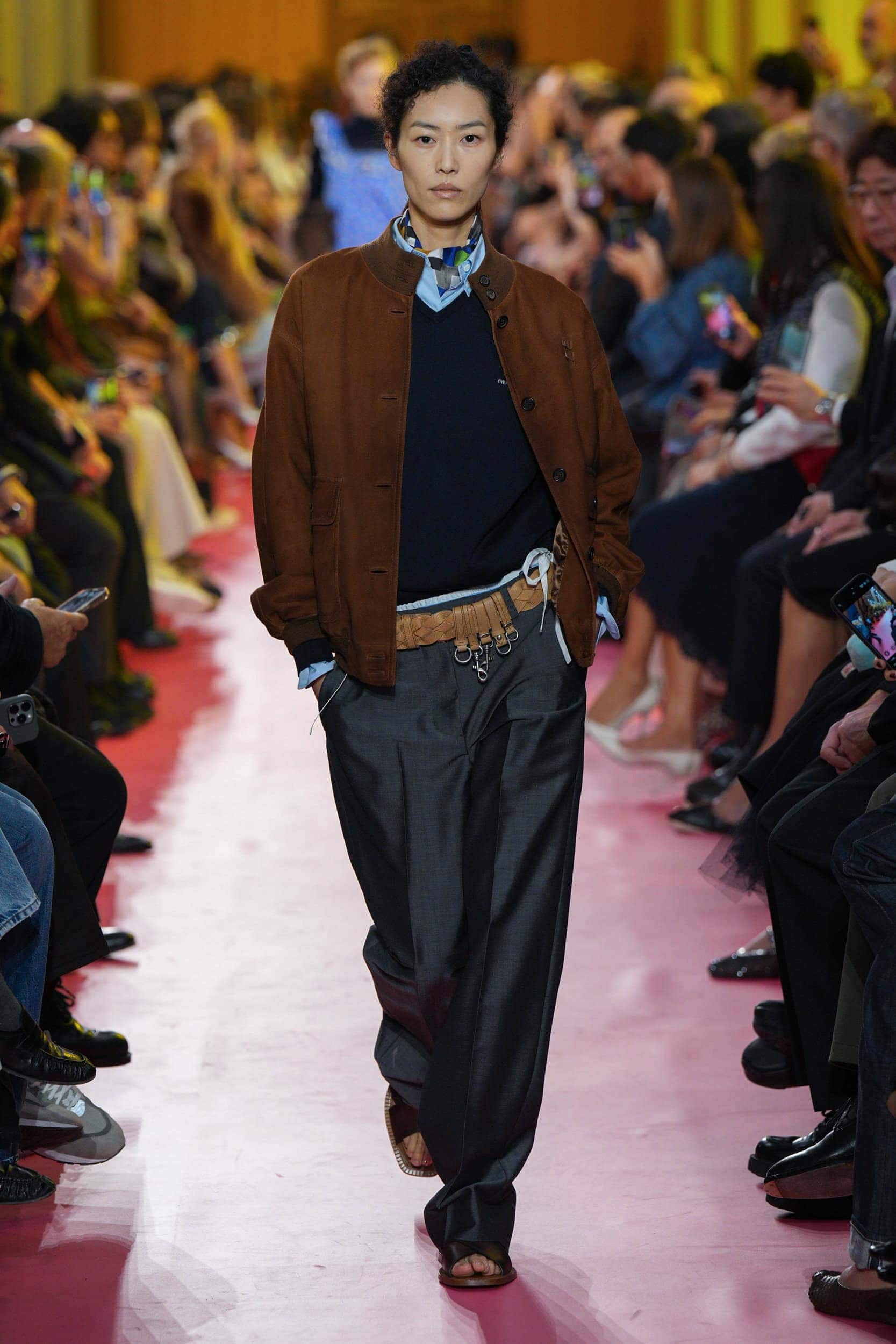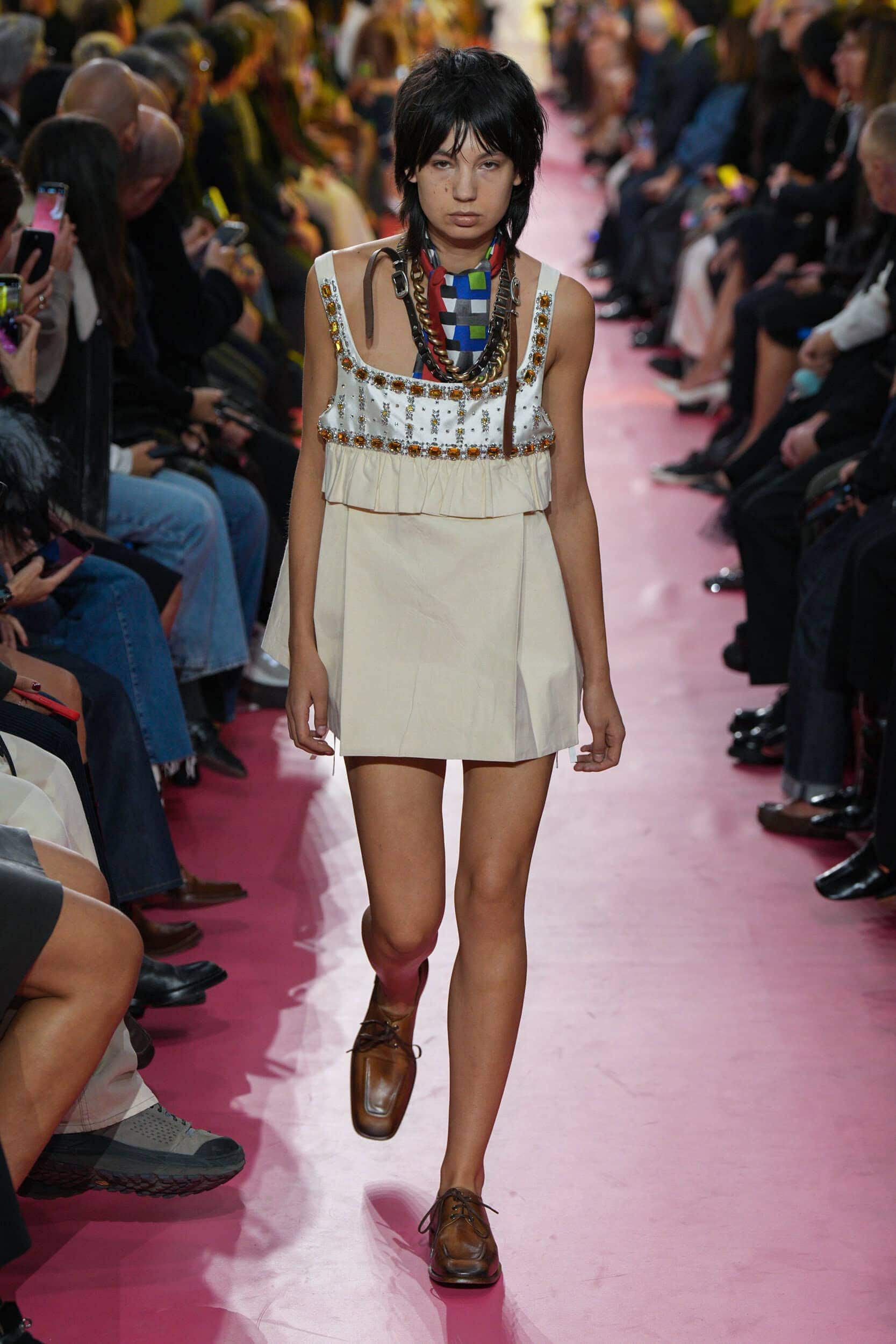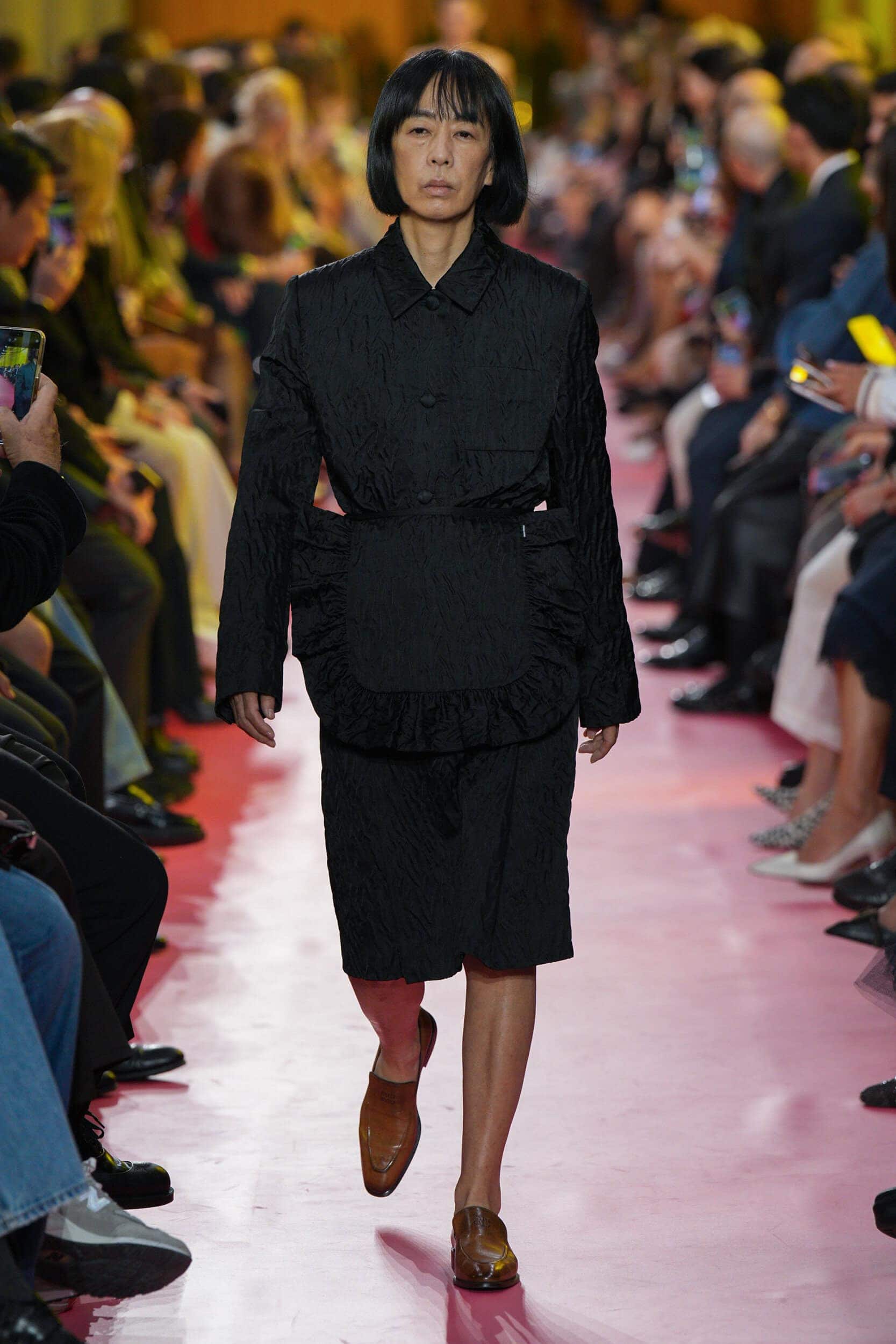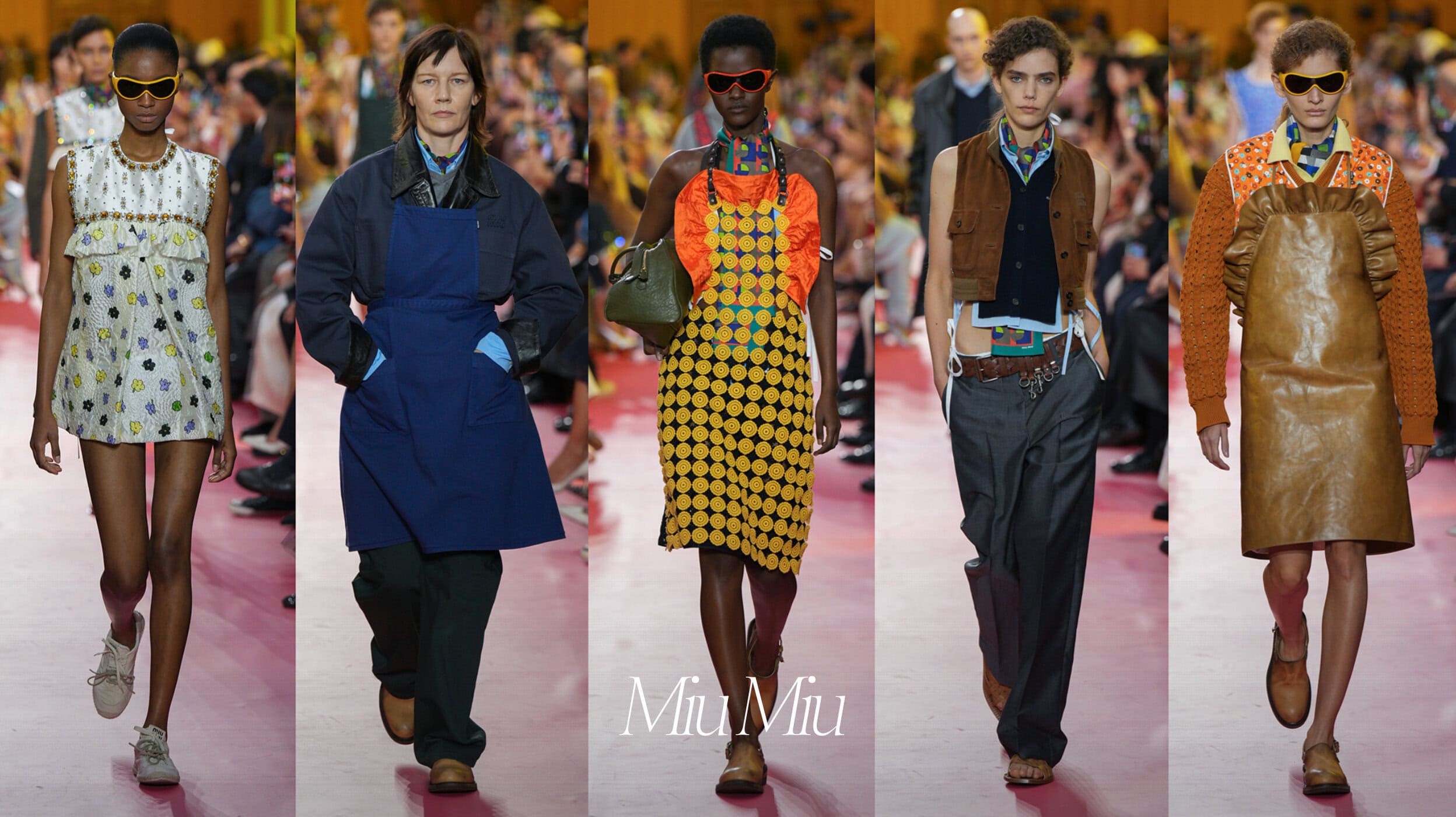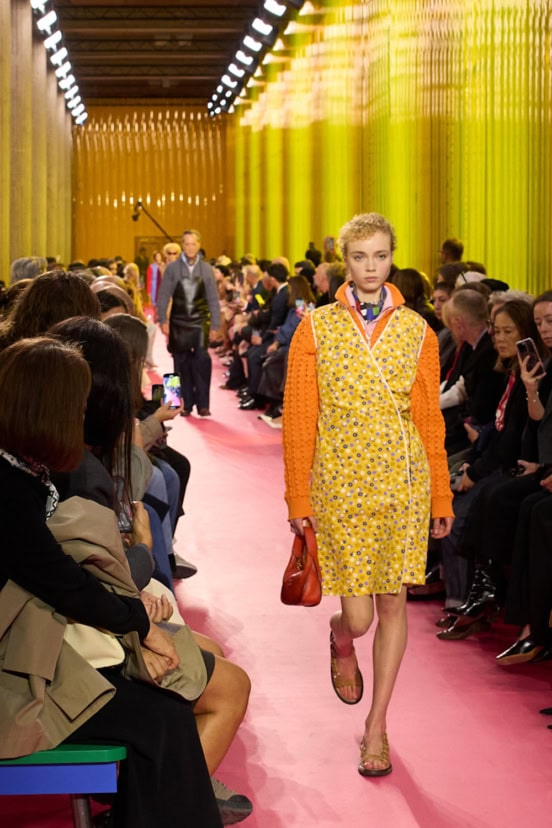The Work Beneath
Review of Miu Miu Spring 2026 Fashion Show
By Mackenzie Richard Zuckerman
THE COLLECTION
THE VIBE
Romanticized Workwear & Defiant Intellect
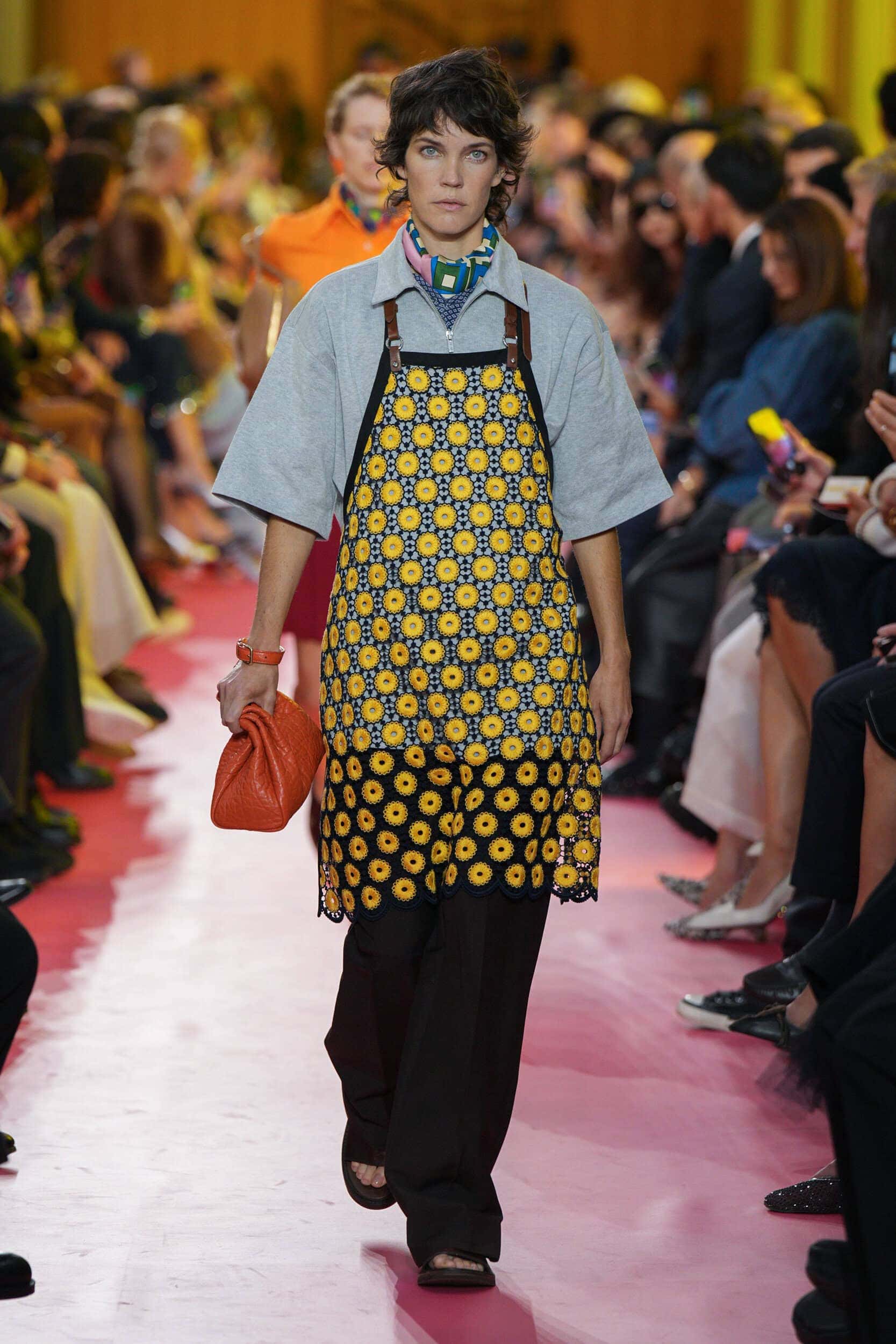
Miuccia Prada has never been one to court comfort – intellectual, aesthetic, or social. This season, she turned her attention to the apron, a garment historically meant to protect the precious thing beneath it. On the Miu Miu runway, that logic was reversed. In cotton canvas, leather, and ornate frills, the apron itself became the precious thing – an inversion that questions where value truly resides.
It’s a silhouette with history at Miu Miu, one that’s threaded through past collections as a symbol of domestic labor and feminine discipline. Yet here, the gesture arrived with a sharper edge – less nostalgic, more probing. By placing the visual codes of work and service at the center of luxury, Prada reframed a utilitarian symbol as a marker of status. The result was both intelligent and self-aware – stripped of irony, it sought authenticity, confronting the realities of labor and dignity with rare humility.
But on the surface, that tension prompts a larger question: can luxury draw from the aesthetics of labor without exploiting them? Does this act of transformation make the working class feel seen, or does it aestheticize a hardship its clientele will never have to endure? And what happens when honesty meets artifice — when a leather apron becomes both armor and ornament, protection and performance?
If there was an answer, Prada offered it obliquely. The women on her runway moved with the confidence of those who don’t need validation to know they’re interesting. To them, approval is beside the point. It’s a reminder that Prada doesn’t design for applause; she designs for reflection. To today’s cult following, that restraint may feel opaque at first – but as with much of her work, meaning reveals itself in layers. The question is less whether we like it, and more whether we’re willing to engage with it.
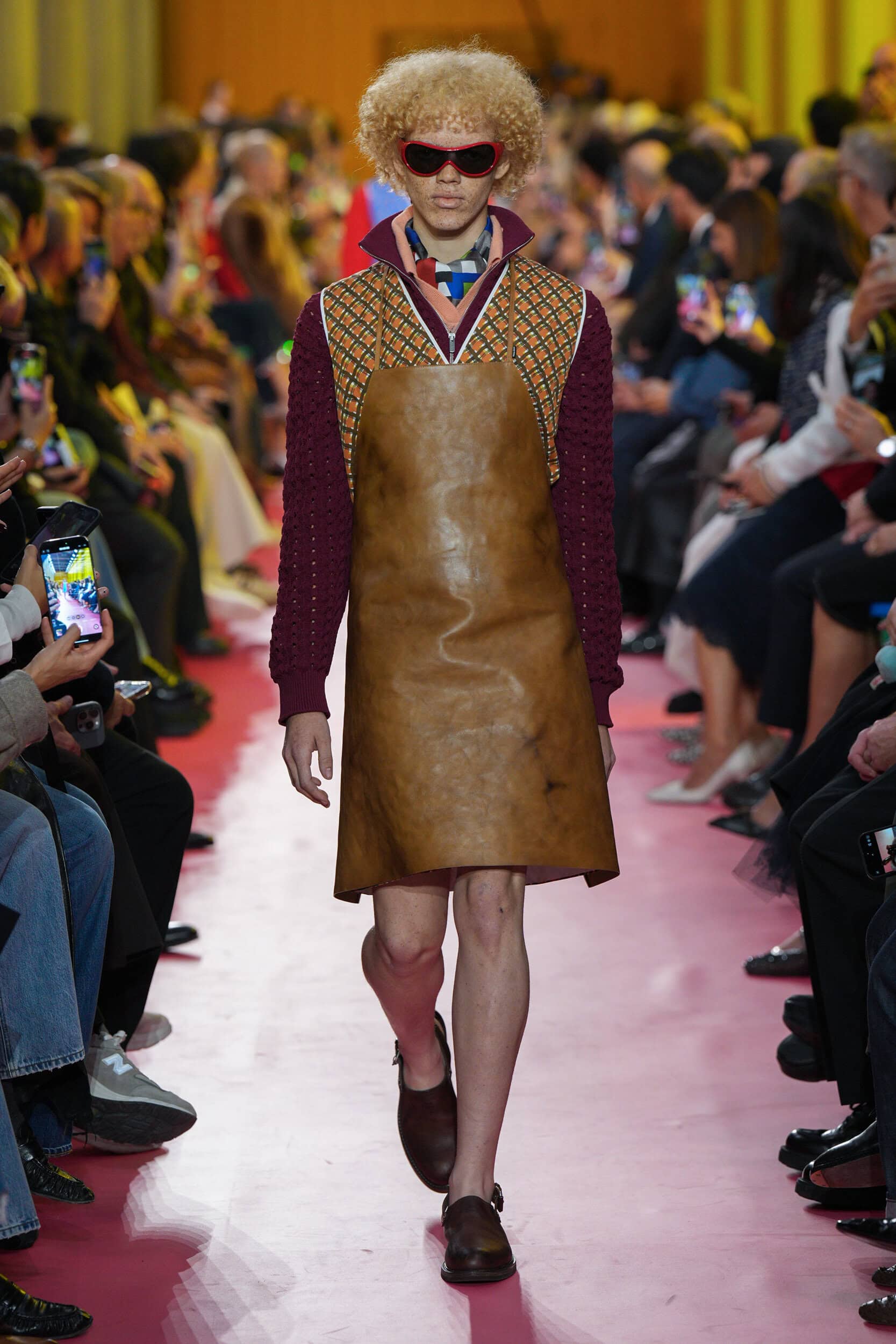
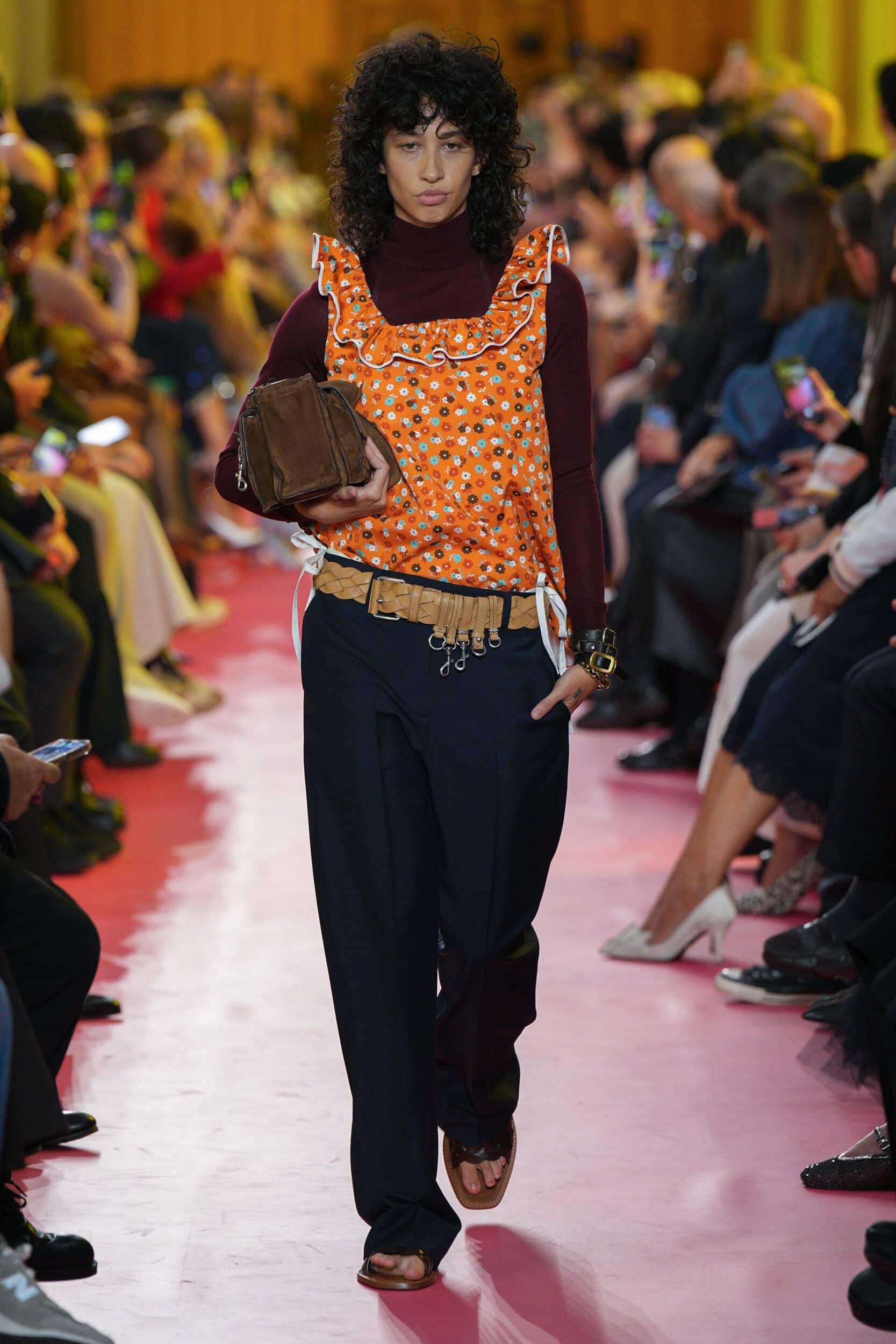
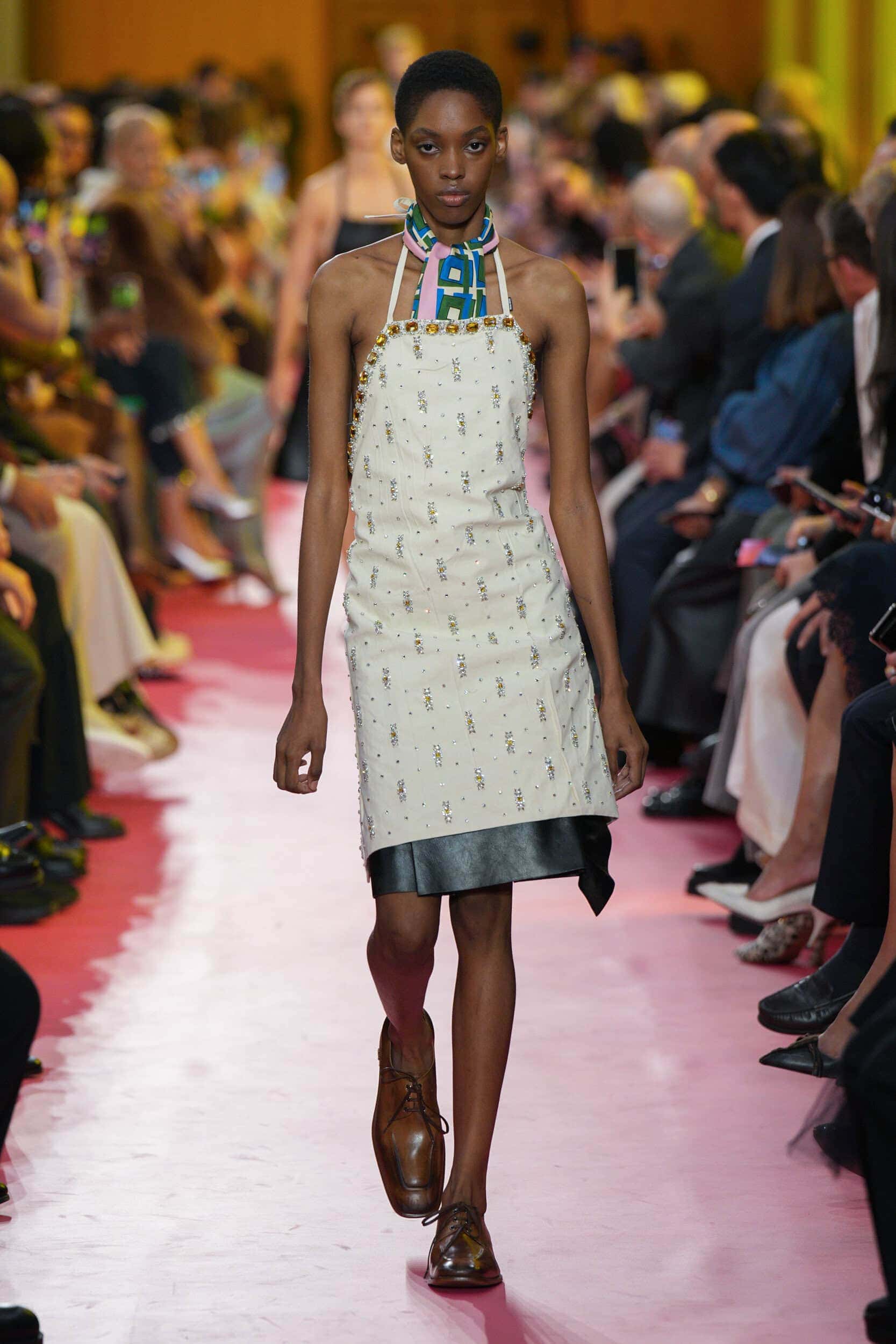
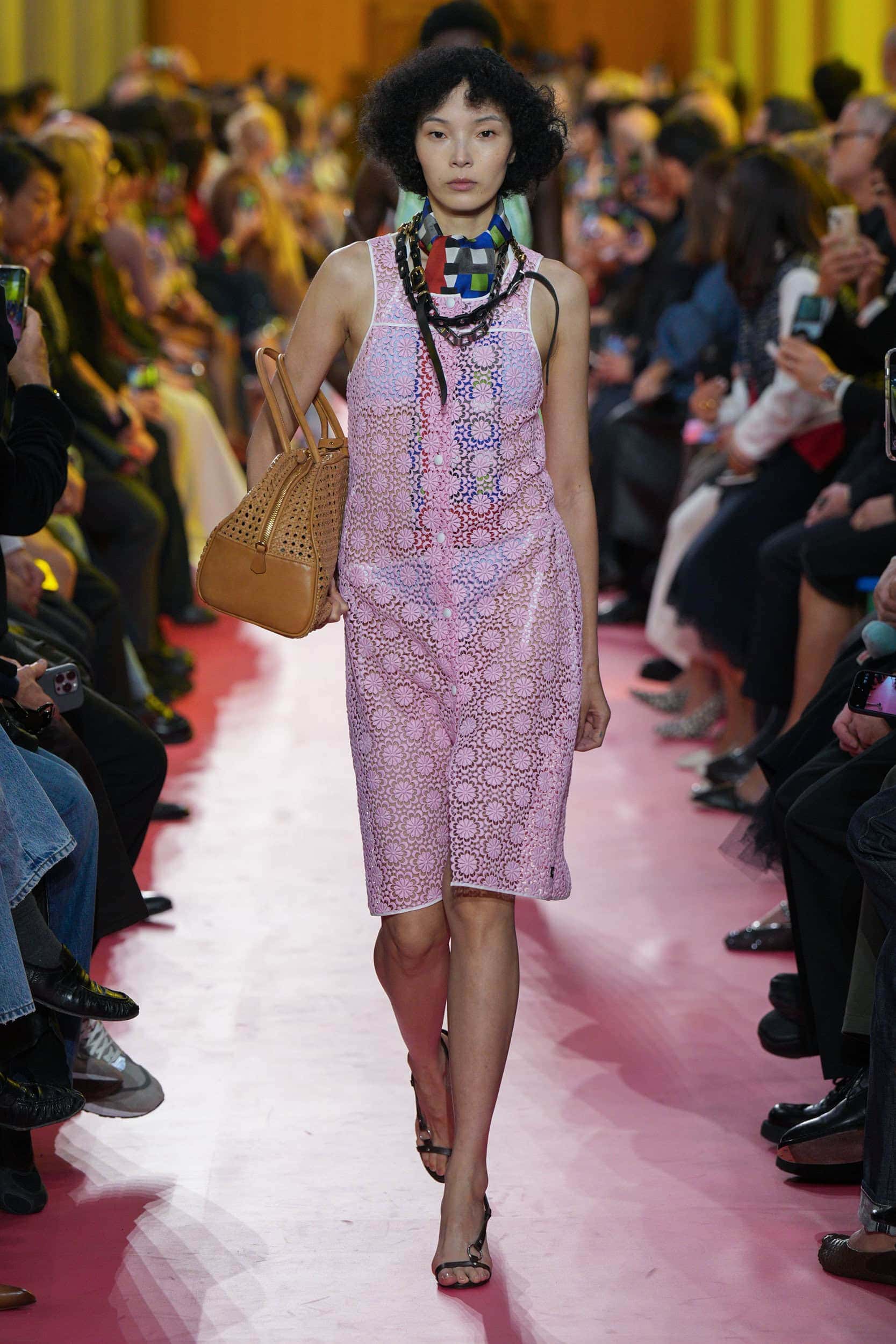
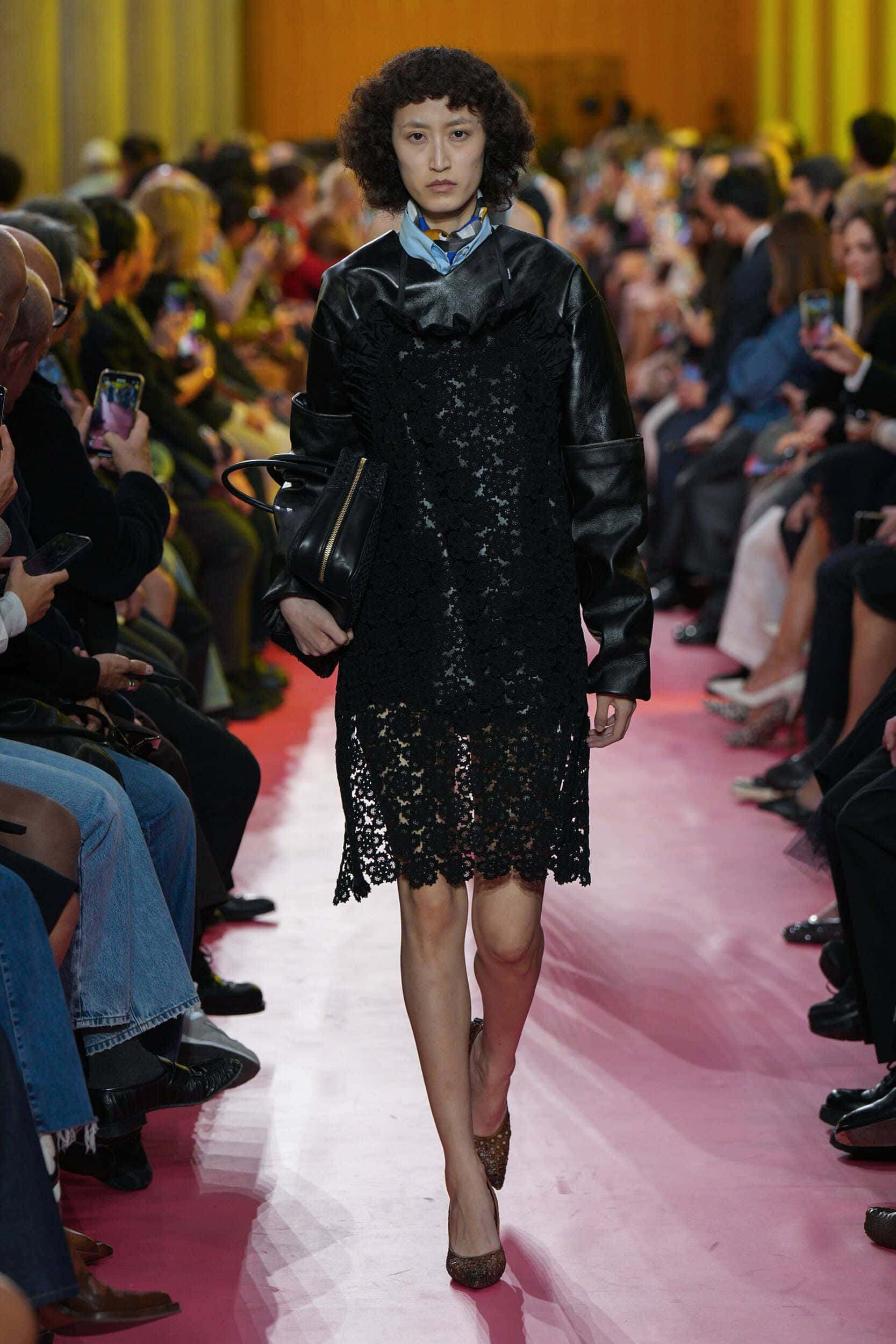
THE DIRECTION
THE QUOTE
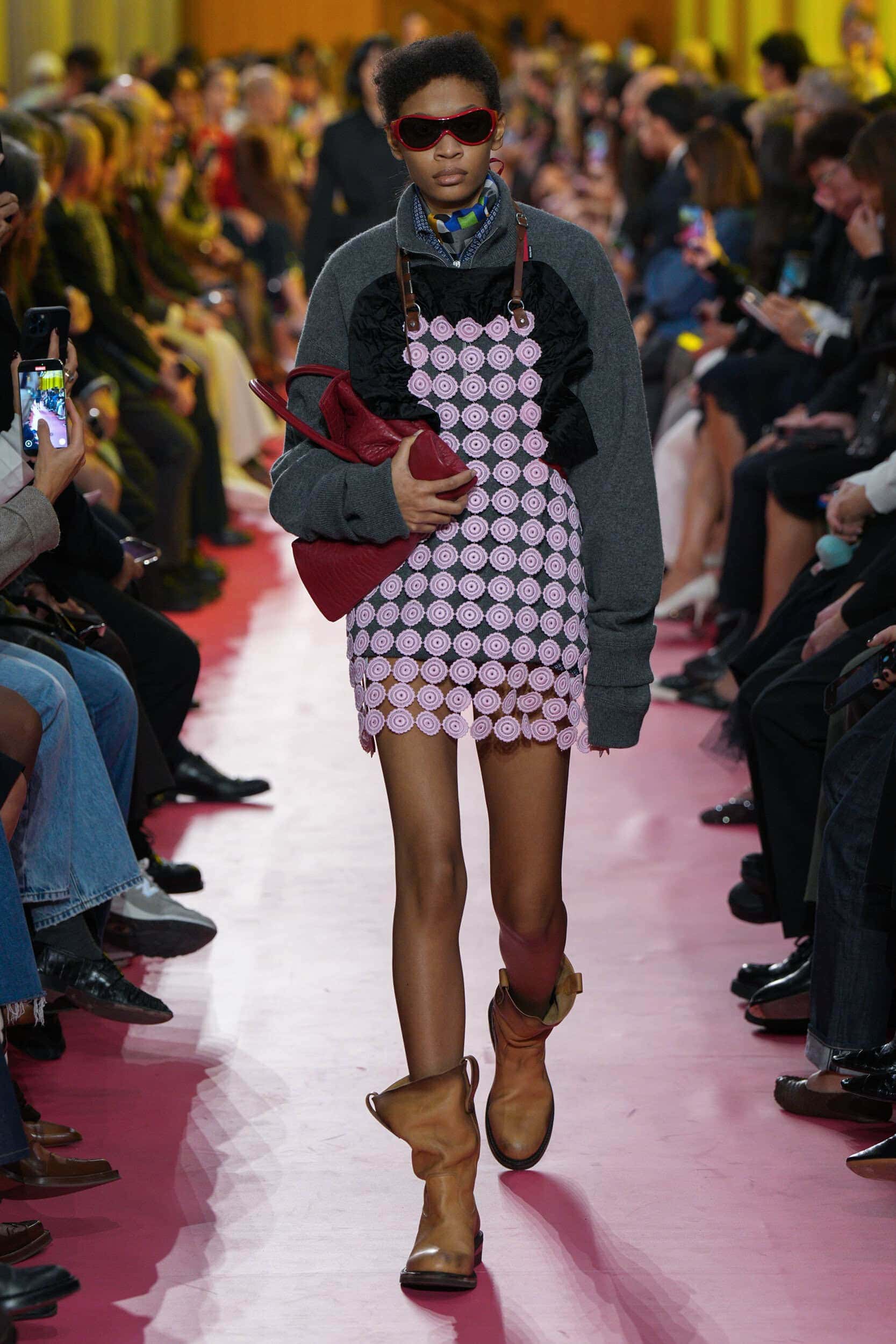
(The) apron is deeply rooted in our history. It means you are working, which is already something. Between factories and homes, it contains humility… and power.
THE WRAP UP
There was tension here, and Prada seemed to welcome it — aware, perhaps, of what Anna Karina once observed: that people love you as you rise, but wait to see you fall. This collection risked that fall, and she knew it. Its provocation ran deeper than aesthetics; it was moral, even existential — an inquiry into value, labor, and perception. On one hand, it made visible the kinds of work and care fashion often ignores; on the other, it tread dangerously close to romanticizing struggle from a position of privilege. That risk will give critics something to seize on. But for Prada, that vulnerability is the point — proof that fashion’s relevance depends on its willingness to face discomfort. Her detachment, her bourgeois vantage, remains her lens, not her escape. She doesn’t stand above the world; she studies it, translating friction into thought, fear into form.
Some looks leaned too heavily on cleverness, but others – like a maid’s coat trimmed with lace – struck a tone of disarming beauty. The result was a collection that divided on first glance yet deepened on reflection. It was a conversation rendered in fabric, equal parts intellect and instinct – and a reminder that Miuccia Prada’s most enduring strength lies in her refusal to flatter, her commitment to keep fashion thinking.
